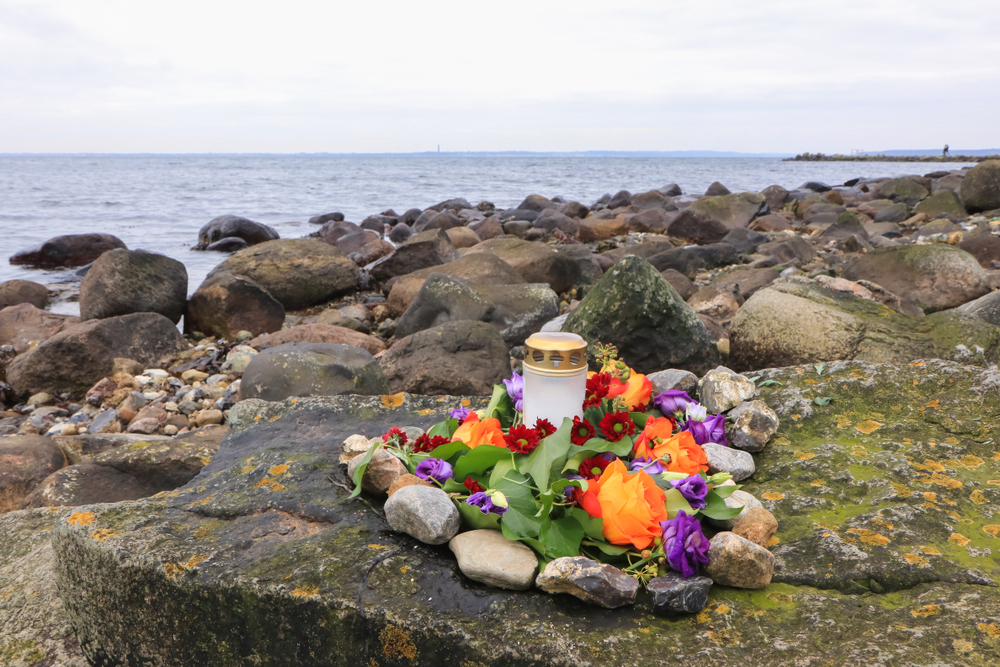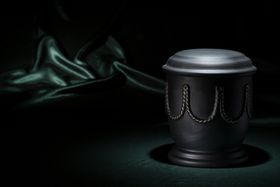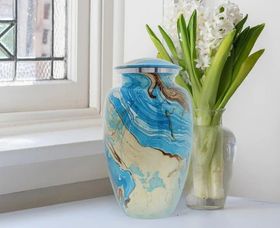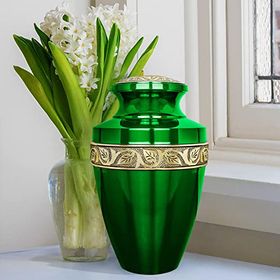Different Ways That Cremation Urns and Ashes Can Be Buried
Published March 25, 2022

Some families choose to scatter the cremated remains (also known as cremains), while others choose to keep the urn in their homes. However, burying the cremains is also a popular way of expressing symbolic closure after the cremation. There are certain factors involved with the burial of cremation urns, so it is important to make an informed decision, which is why we have put together some essential points to help make your decision easier.
Burying Cremation Urns at a Cemetery
Burying ashes in a cemetery or graveyard provides a permanent location that can always be visited. Cemeteries are also typically maintained and well cared for. In most cases, the burial plot for ashes is much more affordable because it doesn’t require as much space as a traditional burial.
That being said, here are the questions you'll have to ask yourself when deciding if this is the right option for you:
How Deep Is a Cremation Grave?
The depth of the grave will depend on the height of the urn you’ve chosen. The general rule is that there should be around 6 inches of dirt between the top of the urn and the surface of the ground. For example, if your urn is 12 inches high, you will need a hole that is 18 inches deep so that when you place the urn inside, there is room for 6 inches of soil on top.
How Are Cremated Remains Buried?
The procedure for burying an urn is to place the ashes in a cremation urn of your choosing. The urn is either buried on a burial plot in the cemetery, in an urn garden, or entombed in a columbarium, which is an above-ground building that houses the cremains.
Which Type of Urn Do You Need?
When burying an urn, it is important to choose the right material that can withstand the underground forces that could cause physical stress on the urn over time. Urns made of metal and cultured materials like marble, stone, granite, onyx, or custom blends of resin and filler are suitable for burial. Biodegradable and eco-friendly urns are another great urn burial option.
Can Cremated Remains Be Buried With Another Person?
Generally, this is possible, but it does depend on the cemetery’s policy. Most cemeteries will allow you to bury an urn on top of a casket or utilize the space provided next to the other person. Cemeteries also allow for the cremains of multiple people to be buried into a single graved space.
Do You Need a Vault to Bury an Urn?
A burial vault is a very sturdy container that holds the remains. Its purpose is to enclose and protect the casket or urn and prevent the ground from caving in overtime. Some cemeteries require that you use a burial vault when burying an urn. Generally, the vault is made of concrete, but more cost-effective options like plastic vaults perform the same function.
Can Ashes Be Buried at Home?
Yes, your loved one’s ashes can be buried on private or public property, including your back or front garden. It is a wonderful way to keep them close to the family. Just be mindful that if you need to sell your home, the new owners may not let you visit the burial place, and exhuming the urn might be something you need to consider.
Are There Laws About Burying Cremated Remains?
There are laws governing burials, but the general consensus is that it is legal. However, it would be best to double-check with the local zoning laws of your municipality before burying your loved one’s urn.
Other Ways to Bury Cremated Ashes
If burying the cremains in a cemetery or garden is not for you, there are a few other places where you can lay your loved one’s ashes to rest, such as the following:
Your Local Park
The local city park might have been your favorite place to visit with your loved one, and laying them there to rest would be special. Most parks are open to biodegradable urns or living urns that grow a new tree; just be sure to get permission from the park first.
A Wilderness Area
You and your loved one may have had a favorite holiday spot in a wilderness park, and it would make the perfect place to bury their ashes. Just like with local parks, most wilderness areas are open to biodegradable or living urns, so long as the tree is native. Contact the officials in charge to get permission to plant your urn.
Sea Burial
If your loved one enjoyed the ocean, you could bury their urn at sea. According to EPA guidelines, you need to travel three nautical miles from the coastline and use a biodegradable urn.
There are other projects like the memorial reef where the cremains are combined with concrete and made into a mold or sealed in a specially designed concrete container in the shape of a ”reef ball,” which mimics the natural formation of a reef. Your loved one’s ashes will be sunk to the bottom of the ocean to create an artificial reef.
Conclusion
Choosing what to do after the death of a loved one is a personal choice for you and your family to make. The good news is that the burial of an urn is possible and is a great choice if you would like to give your loved one a final resting place after cremation.





